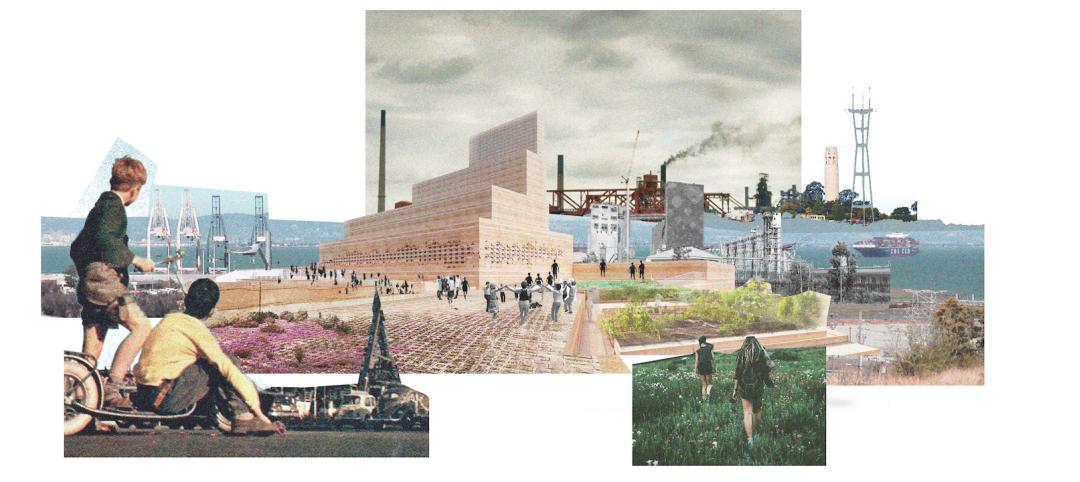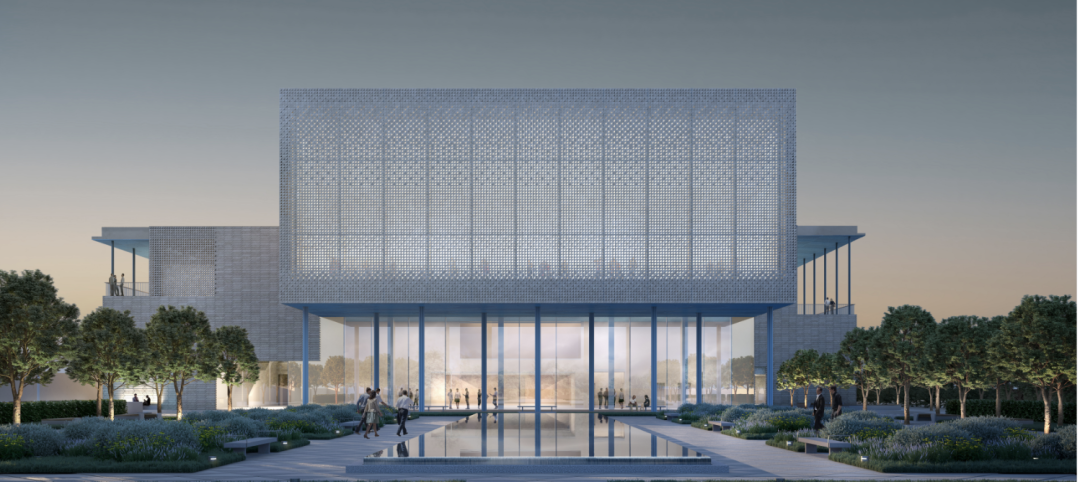Ten years ago, the Regents of the University of California allocated $235 million in bonds (later widened in scope and bumped up to $285 million) to build a replacement hospital on its Irvine campus. The Regents had taken over an existing hospital from Orange County, one that could not be reconstructed to meet California's rigorous SB 1953 seismic requirements. In early 2004, when the bids were opened, the lowest came in a staggering $59 million over budget. This was at a time when prices for steel, concrete, and gypsum board were soaring, MEP engineering firms capable of handling a complex hospital project were not available, and some specialty trades were reporting bid increases of 10-20% a week.
By that summer, the old hospital was being torn down and the site was being cleared, and still no contractor had been hired. At last, in October 2004, Hensel Phelps Construction Co. was awarded the job and given 48 months to deliver a completed building. No matter that the local office of Hensel Phelps had never built a ground-up new hospital (nor, for that matter, had UC Irvine), nor that it intended to do so under design-build—a delivery method that the oversight agency, the Office of State Health Planning and Development (OSHPD), had zero experience with.
Building a relationship with OSHPD
OSHPD has a reputation for being arguably the toughest building authority in the country. The Building Team — Hensel Phelps (GC), HOK (architect), Nabih Youssef Associates (structural engineer), and TMAD-Taylor & Gaines (MEP engineer) — knew that it would have to earn OSHPD's respect and confidence, especially given the agency's trepidation about its first design-build project. At the same time, OSHPD recognized that it had to be open to the concept of design-build or it might not be able to deliver the $41 billion in SB 1953 projects for which it was responsible.
UCI and Hensel Phelps staff started off by holding the fairly customary array of ad hoc field meetings, monthly management meetings, and quarterly executive meetings with OSHPD to review upcoming work and establish priorities.
But the team went much further than that. UCI created the position of "OSHPD Expeditor" to coordinate all OSHPD-related activities—change orders, site visits, etc. The team also pledged to submit only detailed, complete designs with all required backup to OSHPD, provided the agency would reciprocate by meeting review deadlines in timely fashion. To their mutual credit, neither party missed a single deadline over the course of the nearly four-year project.
The university also promised OSHPD that all design packages would be meticulously reviewed by UCI staff before submitting them to OSHPD; to accomplish this, UCI allocated professional architects and engineers to staff the review team. Hensel Phelps appointed a QC manager to make sure submittals were complete and ready prior to inspection requests, and all RFIs were processed by UCI's quality assurance team. UCI found that this "shoulder-to-shoulder QA review" between its professionals and OSHPD staff helped to remove anxieties on OSHPD's part about the accelerated pace of review under design-build.
In yet another effort, UCI paid for extra training for its in-house inspectors of record to become OSHPD-certified Class A inspectors and hired a veteran lead IOR to head its team of five OSHPD-approved inspectors. UCI devised a Web-based inspection request system to enable the Building Team to submit and track inspections online. To maintain continuity and consistency, IOR responsibilities were designated by scope of work, not by location in the building.
For its part, OSHPD made critically important concessions. The agency relaxed pre-qualification requirements for 10 subcontractor trades. Bid documents were streamlined from 58 alternatives to three. Technical submittal requirements were reduced by 70%. The field information and decision-making process with OSHPD was streamlined to reduce risks.
How the Building Team cut $63 million in costs
Hensel Phelps and its partners in the Building Team worked under a "best and final offer" process, which capped the first phase of the hospital and the central plant at a maximum acceptance cost of $250 million. Later, additional scope, including get-ready work for phase two of the hospital, was added to the project, bringing the total acceptance cost to $285 million. In the end, the Building Team brought the job in for $283 million.
Value engineering saved $35 million without jeopardizing the building program. This was accomplished by reducing floor heights from 18 feet to 15 feet and overall building height by seven feet, "diminishing" an iconic tower, and using precast building skin in lieu of stone. Changing the structural system from moment connection to brace frame with gusset plates and exposed braces saved 1,600 tons of steel.
Roof-mounted cooling towers were deleted in favor of air-cooled towers on the ground. Operating room air handlers were placed in the basement instead of in mechanical space on the third floor
Another $28 million was saved through scope reductions (such as eliminating a proposed campus circulation arcade) and deferring certain items — rooftop gardens, an outdoor dining area — to a later phase.
Checks and balances were instituted to make sure the public good was protected. Two independent cost estimators were hired, one to price bid documents and advise if changes were needed in program scope, another to prepare sealed cost estimates to be opened at the time of bid. A third-party general contractor was brought in to review subcontractor bids and provide advice during bid negotiations.
Early in the planning, UCI instituted an integrated project delivery program (now known as "Align 2 Redefine") that led to two significant improvements: the foundation was reconfigured to allow for a basement across the full building footprint; and a 27,000-sf bonus shell space was created for a new radiology department in Phase two.
The project closeout also demonstrated excellent team effort. From the outset, UCI planned for an at-once construction final and certificate of occupancy for the entire hospital—partial occupancy or "staff and stock" approval would not be acceptable.
To meet this requirement, the Building Team, UCI's inspectors, and OSHPD staff sequenced all the inspection activities to a rigorous timetable. OSHPD dispatched six Fire Marshal Academy staff to conduct fire alarm, door contact hardware, stair pressurization, and above-ceiling fire-stopping inspections. A team of 15 was assigned to conduct fire alarm testing over several days.
UC Irvine Douglas Hospital became the first large-scale OSHPD project to finish on time and within budget, in fact, four months early and $2 million below the $285 construction budget. In evaluating this achievement, Rebeka G. Gladson, FAIA, UCI's associate vice chancellor and campus architect, praised Hensel Phelps's "unparalleled ability in the management and delivery of this complex project" and suggested that the relationship between the university and its Building Team be viewed as "a model for the entire industry to replicate." In bestowing Platinum honors on this project, the Building Team Awards jury concurred with this assessment.
PROJECT SUMMARY
Platinum Award
UC Irvine Douglas Hospital at the University of California Irvine Medical Center
Orange, Calif.
Building Team
Submitting entity: University of California, Irvine (owner/developer)
Architect: HOK
Interior architect: Dave Keaggy & Associates
Structural engineer: Nabih Youssef Associates
MEP engineer: TMAD–Taylor & Gaines
General contractor: Hensel Phelps Construction Co.
General Information
Project size: 474,353 sf
Construction cost: $283 million
Construction time: December 2004 to September 2008
Delivery method: Design-build
Related Stories
Multifamily Housing | Jul 28, 2022
GM working to make EV charging accessible to multifamily residents
General Motors, envisioning a future where electric vehicles will be commonplace, is working to boost charging infrastructure for those who live in multifamily residences.
Urban Planning | Jul 28, 2022
A former military base becomes a substation with public amenities
On the site of a former military base in the Hunters Point neighborhood of San Francisco, a new three-story substation will house critical electrical infrastructure to replace an existing substation across the street.
Hotel Facilities | Jul 28, 2022
As travel returns, U.S. hotel construction pipeline growth follows
According to the recently released United States Construction Pipeline Trend Report from Lodging Econometrics (LE), the total U.S. construction pipeline stands at 5,220 projects/621,268 rooms at the close of 2022’s second quarter, up 9% Year-Over-Year (YOY) by projects and 4% YOY by rooms.
Codes and Standards | Jul 27, 2022
Biden administration proposes drastic flood insurance reform
The Biden administration’s proposed major overhaul to the National Flood Insurance Program, or NFIP, would drastically alter how Americans protect homes and businesses against flooding.
Concrete | Jul 26, 2022
Consortium to set standards and create markets for low-carbon concrete
A consortium of construction firms, property developers, and building engineers have pledged to drive down the carbon emissions of concrete.
Green | Jul 26, 2022
Climate tech startup BlocPower looks to electrify, decarbonize the nation's buildings
The New York-based climate technology company electrifies and decarbonizes buildings—more than 1,200 of them so far.
Education Facilities | Jul 26, 2022
Malibu High School gets a new building that balances environment with education
In Malibu, Calif., a city known for beaches, surf, and sun, HMC Architects wanted to give Malibu High School a new building that harmonizes environment and education.
| Jul 26, 2022
Better design with a “brain break”
During the design process, there aren’t necessarily opportunities to implement “brain breaks,” brief moments to take a purposeful pause from the task at hand and refocus before returning to work.
Building Team | Jul 25, 2022
First Ismaili Center in the U.S. combines Islamic design with Texas influences
Construction has begun on the first Ismaili Center in the U.S. in Houston.
Codes and Standards | Jul 22, 2022
Office developers aim for zero carbon without offsets
As companies reassess their office needs in the wake of the pandemic, a new arms race to deliver net zero carbon space without the need for offsets is taking place in London, according to a recent Bloomberg report.

















